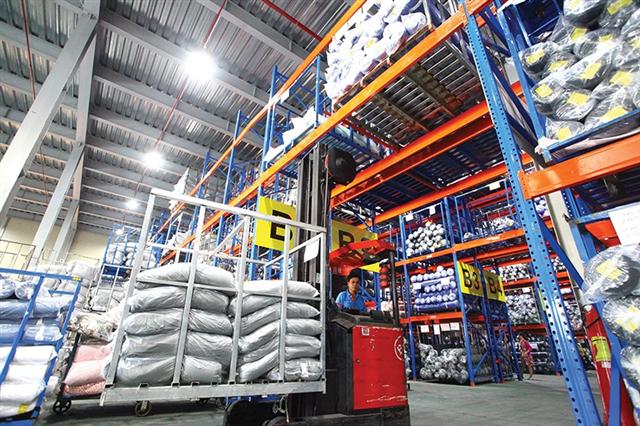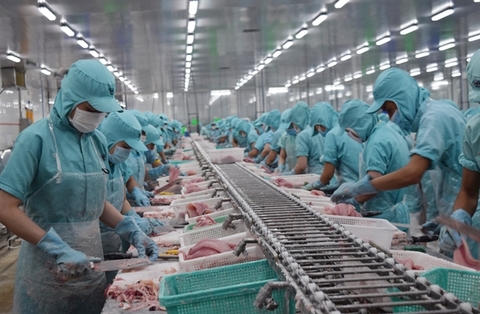Local conditions entice relocation of factories
Local conditions entice relocation of factories
The relocation of multinational companies’ factories is expected to be a hundred-billion-dollar opportunity that will allow Vietnam to delve deeper into global supply chains.

By relocating 3-5 per cent of foreign investment currently in China, Vietnam could expect $60-100 billion, photo Le Toan
|
While companies are ramping up efforts to relocate operations, seven out of 10 small- and medium-sized South Korean companies in China have no interest in returning home, according to a survey from Seoul-based Korea Federation of SMEs conducted in June, with nine out of 10 companies in Vietnam also indicating no plans to go home. The businesses considering cutting back operations in China are instead looking to relocate to Southeast Asia, particularly to Vietnam, to restructure supply chain and maintain competitiveness.
In fact, factory workers’ monthly salaries in South Korea averaged at $3,400 in 2019, according to the International Labour Organization. The same data showed their pay was more than 13 times higher than factory staff in Vietnam in 2018 and four times higher than in China in 2016.
In addition to South Korean investors, EU counterparts have similar considerations. As many as 56 per cent of EU businesses plan to expand operations in ASEAN, including Vietnam, according to the sixth Business Sentiment Survey published last week by the EU-ASEAN Business Council. Meanwhile, 72 per cent of respondents in Vietnam plan to expand and 53 per cent of respondents see ASEAN as the region with the best economic opportunities.
Donald Kanak, who is chairman of the EU-ASEAN Business Council said, “ASEAN is still seen as the region of best economic opportunity, but as would be expected during the COVID-19 crisis, the outlook for increased trade and investment shows signs of softening.”
In the opinion of Nguyen Mai, chairman of the Vietnam Association of Foreign-Invested Enterprises, relocation from China is a growing trend due to the changing relations between China and the United States, the European Union, and Japan. “It is hard to foresee massive relocation from China. I think 10 per cent of foreign investment will return to Japan and the US, while 3-5 per cent will pour into third countries like Vietnam,” said Mai.
China has reported holding $2 trillion in foreign direct investment. By Mai’s estimates, this could mean $60-100 billion coming Vietnam’s way. “This would prove quite a boon for Vietnam because only $20.4 billion of the registered $38 billion of foreign investment was disbursed in 2019,” he added.
In order to promote Vietnam as a destination for foreign investors and push them to make decisions more quickly, Mai emphasised that preparing enough clear land to accommodate $100 billion of investment is essential. “If around half of the total area of the approximately 380 economic and industrial zones still available can be cleared, that will be the most appealing aspect for eagles and sparrows alike,” he said.
Besides this, the labour force is another top concern for foreign investors. However, there have been significant improvements in Vietnam in recent times. Samsung has assessed Vietnamese labour skills as similar to the ones in their home country – but at half the cost.
“With the efforts Vietnam has made in education and training recently, I believe that soon no-one will scoff at the skills of the Vietnamese labour force,” Mai added.
Thus, with carefully prepared infrastructure, labour, and policies, along with the attention foreign investors pay Vietnam, the dreams of tapping into the gold mine that is the relocation wave will be brought within reach.























